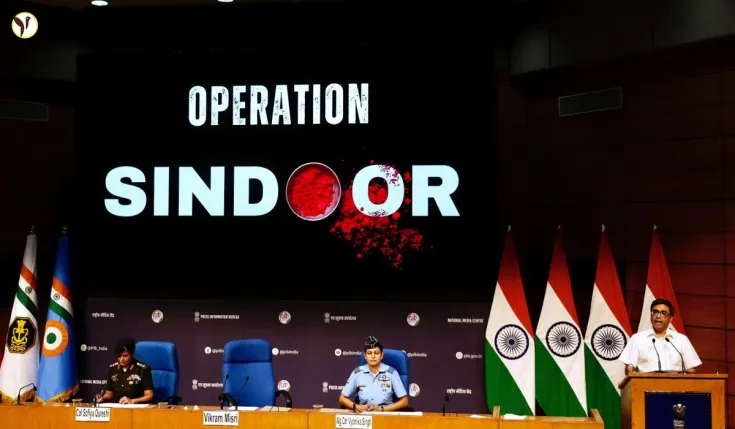India-Pakistan: Operation Sindoor and its Aftermath
In the early hours of Wednesday, May 7th, 2025, India launched "Operation Sindoor," a series of missile strikes targeting what it described as terrorist infrastructure in Pakistan and Pakistan-occupied Kashmir (PoK). This dramatic escalation followed the April 22nd Pahalgam terror attack in Indian-administered Kashmir, which claimed 26 lives. The operation, named after the red vermillion worn by Hindu married women—a poignant symbol given the attack’s victims—sent shockwaves across the globe and reignited tensions between the nuclear-armed neighbors.
The Strikes and Their Targets
Indian officials stated that nine sites were targeted, including the headquarters of the Jaish-e-Mohammed (JeM) in Bahawalpur and the Lashkar-e-Taiba (LeT) in Muridke, both in Pakistan's Punjab province. These groups are notorious for carrying out cross-border attacks against India. Other targets reportedly included facilities in Pakistan-occupied Kashmir.
- Jaish-e-Mohammed (JeM): Bahawalpur became a significant JeM hub after the release of Masood Azhar in 1999, a key figure in the group's history and responsible for several attacks on India.
- Lashkar-e-Taiba (LeT): Muridke, near Lahore, has served as the LeT headquarters since 1990 and is associated with the 2008 Mumbai attacks.
- Other Groups: Reports also indicated strikes against facilities linked to the Hizbul Mujahideen (HM) and others.
India maintained that the strikes were "focused, measured, and non-escalatory," targeting only terrorist infrastructure and not Pakistani military facilities. However, Pakistan reported casualties, including at least one child. This discrepancy in the reported impact highlights the conflicting narratives surrounding the event.
Reactions and International Response
The operation triggered a swift and varied international response. Pakistan condemned the strikes as an "act of war," while India defended its actions as a preemptive measure against terrorism.
- India: The Indian government emphasized its right to self-defense and its commitment to holding the perpetrators of the Pahalgam attack accountable. Many Indian political leaders expressed support for the military action, praising the armed forces.
- Pakistan: Pakistan vowed a response and engaged in heavy shelling along the Line of Control (LoC), leading to further casualties on both sides.
- International Community: The UN Security Council held closed-door consultations, urging both countries to de-escalate tensions and engage in dialogue. Several countries, while expressing concern, also acknowledged India's security concerns.
The incident led to disruptions in air travel, with several airlines diverting flights to avoid Pakistani airspace and several Indian airports temporarily suspending operations. The heightened security measures and airspace restrictions underscore the volatile situation in the region.
Conclusion: A Dangerous Escalation
Operation Sindoor represents a significant escalation in the long-standing conflict between India and Pakistan. While India justified its actions as a necessary response to terrorism, the operation also raises concerns about the potential for further escalation and the devastating consequences of a conflict between two nuclear-armed states. The international community's call for de-escalation and dialogue is crucial to prevent further violence and find a lasting solution to the underlying issues driving the conflict between India and Pakistan. The situation remains tense, and the need for a peaceful resolution remains paramount.






